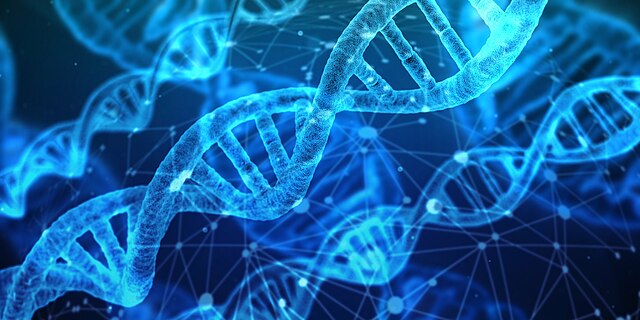
DNA: The Blueprint Of Life
Deoxyribonucleic acid (DNA) is one of the most important molecules in all living things; it contains a unique sequence of information needed for life. There are in fact over 3 billion sequences in the human genome which are responsible for our genetic makeup. Each DNA strand would measure 2 metres in length once unravelled and serves an important purpose in protein synthesis, heredity and evolution.
DNA Structure
DNA was discovered in 1953 by Francis Crick and Jim Watson. Their research was significantly aided by Dr Rosalind Franklin’s research and famous Photo 51 of DNA’s signature double helix, allowing Crick and Watson to complete their molecular model.
We can think of DNA as a large book containing all of our genetic information. This is known as our genome. It is made up of a very long double helix of paired nucleotides. Each nucleotide contains one of four bases – adenine with thymine and cytosine with guanine. They form the rungs of the DNA ladder with each base pair making up the ‘letters’ of our book. The order of these letters form sequences known as genes which can be thought of as ‘paragraphs’. It’s these sequences that make each person and organism unique. In each cell, our entire DNA sequence is broken up and stored into 23 separate pairs of chromosomes, forming the ‘chapters’ of our book.
Role of DNA
DNA serves as a store for all of our genetic information. It has the ability to replicate itself in order to ensure that when our cells divide, the new cells contain a perfect DNA copy. It carries out protein synthesis through the process of transcription. When a gene is ‘switched on’, a molecule called RNA polymerase attaches to the start of the gene sequence and unzips the DNA double helix into two single strands. A messenger RNA (mRNA) copy of a gene sequence is synthesised as free bases attach to one of the single stands in a complementary fashion. Once the gene sequence has been fully read, the mRNA is processed – sections of mRNA are removed or added.
Within humans, the mRNA leaves the nucleus of a cell into the cytoplasm where protein production molecules called ribosomes produce an amino acid chain based on the mRNA sequence. The completed amino acid chain is then released to form a protein molecule. The sequence of amino acids within the protein determines its structure and function, which ultimately determine an organism’s characteristics and traits.
Human Evolution
By determining our features and characteristics, DNA plays an important part in evolution and heredity. Organisms inherit unique traits from their parents through the process of reproduction; here each offspring contains one half of each of their parents DNA to create a new genetic makeup. This process creates genetic diversity in a species which can aid its adaption and survival.
It is interesting to note that all humans are 99.9% identical to each other – it’s this 0.1% difference in our makeup that makes us so unique. Scientists are able to compare DNA sequences within humans to understand our genetic ancestry, migration patterns and evolution.
Genetic Advancements
Modern day medicine and genetic discoveries have heightened our understanding of the human genome. DNA errors or mutations which can lead to diseases and genetic disorders can now be addressed through techniques such as gene therapy. As our understanding of DNA increases, so will our ability to improve our health through personalised medicine, precision agriculture and environmental conservation.
If you are interested in studying a Science, Oxford Open Learning offer you the chance to do so at a number of levels, shown below. You can also Contact Us.